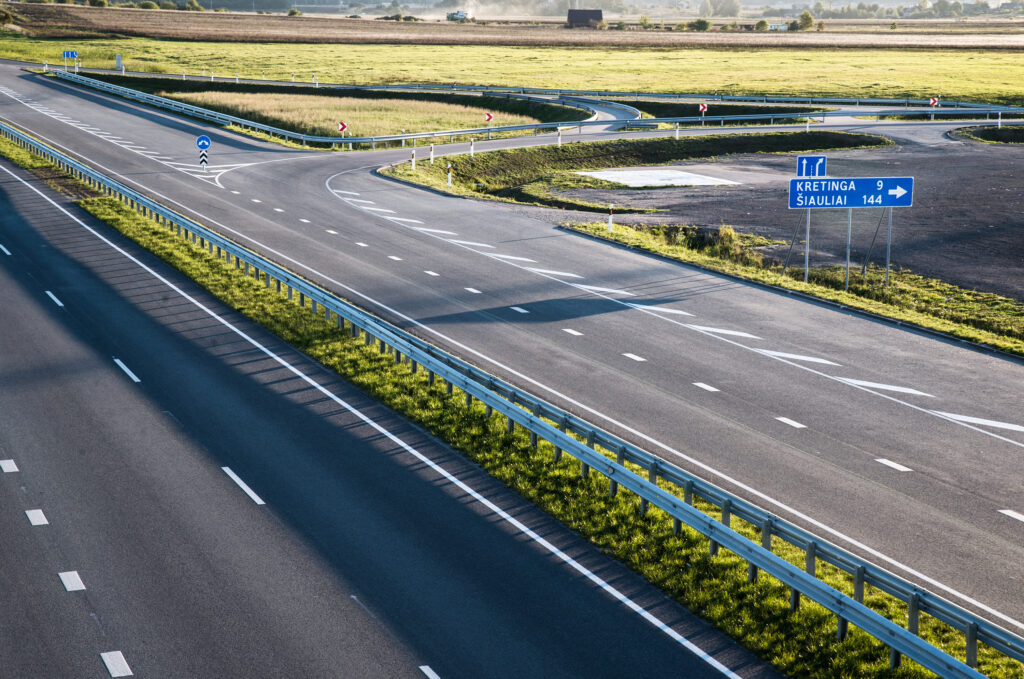The Palanga bypass will reduce air pollution in surrounding areas by 35 percent and noise pollution in Palanga by 5 dBA
2014-03-20
The start of March saw both the construction of the Palanga bypass and the reconstruction of the nearby Vydmantai interchange begin. By the calculations of Kelprojektas – the largest transport infrastructure engineering company in Lithuania that was also responsible for the design works of these two projects – building this bypass will significantly reduce the effect road vehicles have had on the environment and the health of local inhabitants. It is expected that regional air pollution in the road network will decrease by 35 percent, while noise pollution in the transit streets of Palanga will drop by 5 dBA.
“When preparing the technical designs for the Palanga bypass and Vydmantai interchange, our specialists thoroughly assessed the impact these two projects would have on the environment and on the public. Our goal is to ensure that the environmental situation is improved dramatically, or that the negative effects are reduced to a minimum: to ensure that local inhabitants aren’t bothered by noise, to reduce air pollution and to preserve biological diversity and the landscape,” said Algimantas Medžiaušis, CEO of Kelprojektas UAB.

According to the specialists from Kelprojektas, once the Palanga bypass is built it will be used by several thousand road vehicles to circumvent the streets of Palanga (a portion of Kretinga st., part of the Klaipėda hwy and part of the Liepoja hwy) – as such, air pollution around these transit streets in Palanga will fall by a whopping 35 percent. In the future, air pollution should also decrease due to technological advancements in car manufacture.
Since the stream of road transport vehicles in transit will circumvent the city, the noise levels in Palanga will also be reduced. According to the strategic noise map for the main roads (charted in 2011), the closest residential buildings are exposed to noise levels of around 65-70 dBA daily (the noise hygiene threshold is exceeded by up to 5 dBA). It is expected that noise levels will drop by 5 dBA in or around current transit streets: Kretinga st. (the stretch from the Vydmantai junction to Klaipėda hwy), Klaipėda hwy (the stretch from the intersection with Kretinga st. to the intersection with Liepoja hwy) and Liepoja hwy (the stretch from the intersection with Klaipėda hwy to the Palanga Airport).
“Environmental impact assessments play an important role in achieving traffic safety and installing environmental protection measures. By being thorough in implementing these projects we will not only reduce noise or air pollution – all of the installed measures will help decrease the number of traffic accidents, preventing harm to both road users and animals,” said Tadas Varpučinskas, an environmental protection specialist at Kelprojektas UAB.
Footpaths and cycling roads will be rebuilt around the Palanga bypass and Vydmantai junction, and a new underground crossing for pedestrians and cyclists will be created under the A13 road. The surroundings will be cleaned up and road barriers will be put in place. The project contains solutions for the protection of wild animals where the road is intended to run through a forest. In order to protect animal life, the Palanga bypass includes such measures as fences, double gates, horizontal barriers, animal ramps, an archway for amphibians and warning signs.
About the Palanga bypass
The Palanga bypass is built as part of a public-private partnership project that has a duration of 25 years and costs 123.575M Lt. In accordance with the contract, the bypass will be built no later than November this year, and it will be opened to traffic by the 1st of May, 2015. The construction works are carried out by Kauno Tiltai AB and Šiaulių Plentas UAB, working together on the basis of a joint venture agreement.
The 8.25 kilometres long Palanga bypass will be part of the Klaipėda-Liepoja motorway and will redirect transport in transit travelling towards Liepoja, Klaipėda and Šiauliai away from Palanga. The Vydmantai junction near Palanga will be rebuilt into a clover-shaped multiple-level interchange, and the bypass will sport two new intersections.
